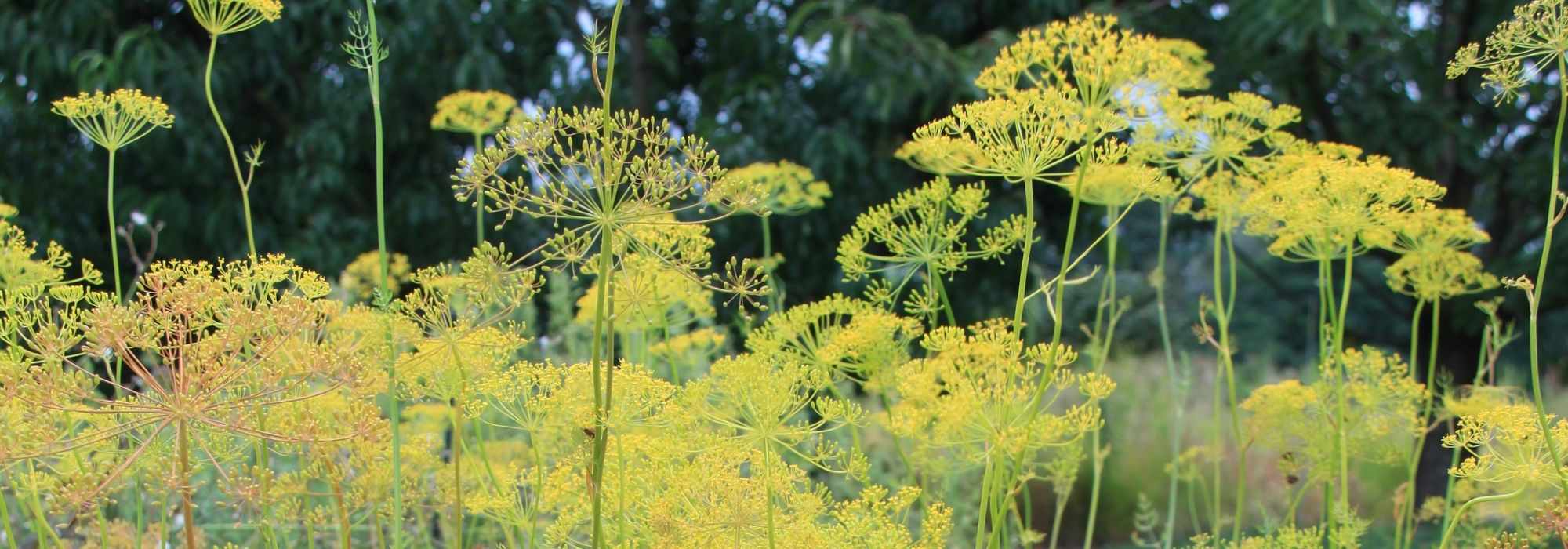
Dill: sowing, planting, benefits
Contents
Dill in a nutshell
- Dill is a light, airy aromatic annual plant with a subtle anise flavour, much prized in cooking
- Its finely cut foliage, soft green or glaucous, resembles that of its cousin fennel
- It is also cultivated for its highly aromatic seeds, prized for their digestive properties
- In summer it displays pretty, graphic umbels in a bright acid yellow
- Indispensable in the vegetable patch or in a pot on a balcony, it also has its place in the garden among flower beds and borders
A word from our expert
Well known as an aromatic herb and for its digestive virtues, Dill is also a pretty annual plant that can take pride of place in ornamental gardens!
Closely related to fennel, dill is, like it, much appreciated in cooking for its finely divided, soft green or grey-blue foliage and its seeds, which have an aniseed flavour, used to flavour many dishes!
With its light, airy, wild silhouette, dill naturally finds its place in vegetable gardens, herb gardens, in pots on balconies and even in summer borders, where it adds freshness and poetry.
Easy to grow, it needs only sun, warmth and a sheltered spot away from wind, otherwise dill will flop over! Dill is sown outdoors or in a pot in spring and is harvested throughout summer!
How to sow dill, when and how to cut dill and use its delicious leaves, here is all you need to know about this aromatic plant both beautiful and useful!
Description and botany
Botanical data
- Latin name Anethum graveolens
- Family Apiaceae
- Common name Bastard fennel - False anise - Stinking fennel
- Flowering June to October
- Height 0.40 m to 1.5 m
- Sun exposure Sun
- Soil type All
- Hardiness low, frost-tender
Dill, Anethum graveolens, also called “false anise” or “bastard fennel”, is an aromatic herbaceous annual plant of the Apiaceae family (formerly Umbelliferae). It favours warm climates and grows wild in fields, along dry paths or on fallow land in the Mediterranean basin and western Asia.
Only one species is cultivated, Anethum graveolens, but it occurs in several varieties with a more or less pronounced aniseed flavour or a more compact habit.
Dill has an upright, airy habit, forming clumps taller than wide, with height varying according to variety from 0.40 m to 1.5 m for about 40 cm spread. It displays rapid growth — “anethon” in Greek means “that which grows quickly”.
From its long taproot rises a single tall, thin stem in spring: glaucous green, hollow, erect, finely channelled and ramified, bearing a deciduous, extremely fine, very fennel-like foliage. The alternate leaves, with petioles partially sheathing the stem as in most Umbelliferae, are pinnate, divided into deeply cut leaflets. These thread-like strip leaves are soft and arranged like small branches along the stem. They can reach up to 30 cm long. This foliage takes on beautiful shades of green, from glaucous to slightly bluish-silver.
These very aromatic leaves give off a fresh aniseed aroma strongly reminiscent of fennel, its cousin, with which dill is often confused. Its flavour is sometimes judged slightly sharp, hence the affectionate nickname “stinking fennel”! Leaves are used fresh or dried — finely chopped into salads or sprinkled on fish — imparting a piquant aniseed, menthol-like flavour that also recalls cumin.
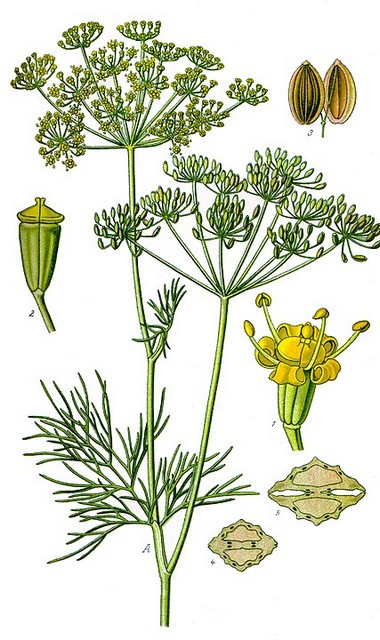
Anethum graveolens – botanical illustration
Flowering occurs between June and October depending on sowing date. Perched at stem tips, the flowers appear well above the fine, feathery foliage. As with all plants in the umbellifer family, the flowers form hemispherical umbels up to 15 cm in diameter.
These flat inflorescences consist of 15 to 30 unequal rays each ending in small umbellules. They are made up of numerous small acid-yellow flowers, long-stalked, with five petals gathered in corymbs.
These magnificent umbels are so rich in nectar that they hum with bees all summer. They make impressive, airy, wild-looking country bouquets. In the garden, the dried heads remain decorative late into the season.
At season end they transform into dry fruits, light-brown, ovoid, ribbed diachenes that split into two at maturity. Dill seeds can be harvested and dried for culinary use, to flavour dishes.
The whole plant emits an aniseed scent. While fresh or dried leaves and dill seeds are valued in cooking to flavour many dishes, they are also recognised for numerous therapeutic virtues similar to green anise and fennel, notably antispasmodic, digestive and galactagogue properties.
With low hardiness to about -5°C, dill is grown as an annual aromatic and culinary plant in our gardens. Very prolific, it readily self-seeds!
It thrives in sun, in a rather rich, light, sandy, well-drained and fairly dry soil. It needs warmth, but its brittle stems are most vulnerable to wind!
While dill is indispensable in the vegetable garden with its aromatic cousins, it will also find a place in a natural garden, in wildflower borders where it will bring height, lightness and a touch of poetry.
Read also
Sowing of aromatic plantsMain species and varieties
Only one species is cultivated, Anethum graveolens, but it declinates into several interesting varieties such as ‘Dukat’ with a very pronounced aniseed scent, ‘Fernleaf’ with leaves reminiscent of fern, ‘Mammoth’, the tallest, ‘Tetra Gold’, bushier and more wind-resistant, and ‘compatto’, selected for its particularly compact habit. Most of our seeds come from organic farming.
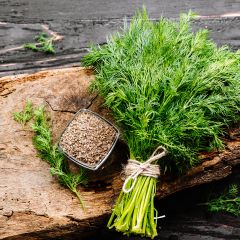
Dill - Anethum graveolens
- Height at maturity 1 m
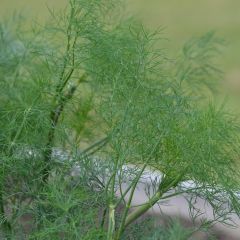
Hera Organic Dill - Ferme de Sainte Marthe seeds
- Flowering time July to October
- Height at maturity 1 m
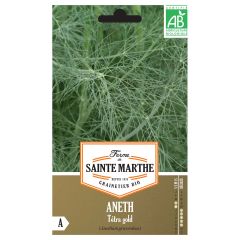
Organic Tetra Gold Dill - Ferme de Sainte Marthe seeds
- Flowering time August
- Height at maturity 40 cm
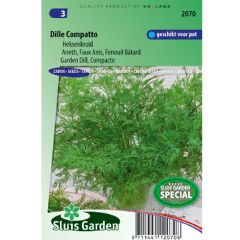
Dill Compatto - Anethum graveolens
- Flowering time August
- Height at maturity 70 cm
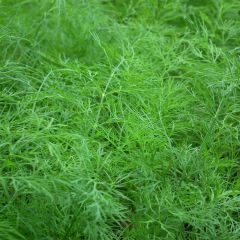
Dill with dense foliage - Anethum graveolens
- Flowering time August, September
- Height at maturity 65 cm
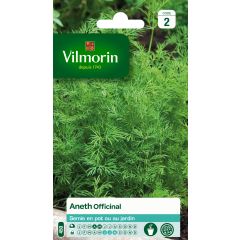
Dill - Vilmorin seeds
- Flowering time August, September
- Height at maturity 1 m
Discover other Dill seeds
View all →Available in 1 sizes
Available in 1 sizes
Available in 1 sizes
Available in 1 sizes
Available in 1 sizes
Available in 1 sizes
Available in 1 sizes
Available in 1 sizes
Sowing dill
Where to sow dill?
Not very hardy, dill tolerates temperatures around -5°C and is grown as an annual in our gardens. It will readily self-seed if conditions suit. It can be sown outdoors in garden soil or grown in a pot.
It grows in sun in fairly rich, light, sandy and well-drained soil. It tolerates most soil types except very poor ones.
Dill is most susceptible to wind. Provide a sheltered spot away from strong winds that might break its hollow stems.
Give it enough space from neighbouring plants so it does not cast too much shade; it tends to spread out!
Dill is a reliable choice for vegetable plots and herb beds, and with its airy habit it brings a poetic breath and structuring element to country gardens, natural gardens and flowering prairies, in herbaceous borders and abundant mixed borders. Taller varieties are planted at back of borders, associated with summer-flowering perennials with vigorous growth.
When and how to sow dill?
Dill is sown directly in situ outdoors (with its taproot, dill does not like being transplanted) in spring, from March to May, for a harvest about two months later. If you want to raise young plants, sow in fairly deep buckets or root-trainer type containers so its long root can develop correctly.
Soil must be worked and loosened deeply to allow optimal root development. If soil is too heavy, lighten with coarse sand and potting soil. Enrich with compost.
Direct sowing
- Rake soil to a fine tilth
- Sow seeds in rows, one seed every 5 cm in a furrow about 10 cm wide and 1 to 2 cm deep
- Space rows 25 cm apart
- Cover seeds with potting soil then firm down with back of rake
- Water with a fine spray and keep moist until germination, which takes between 10 and 15 days
- Thin out to keep a single plant every 20 cm
- Tip: The more you stagger sowings — sow at one- to two-month intervals — the longer harvest period
Sowing dill in a pot
You can also sow directly in pots (cover sowings with plastic); favour small varieties such as dill ‘Compatto’. In a pot kept indoors, you can sow throughout the year.
- In a mix of good garden soil and potting soil, sow two to three seeds in pots 20 to 40 cm in diameter, with a layer of clay pebbles spread on the bottom beforehand
- Thin out to keep 2 to 3 plants per pot
- Place in a sunny, wind-sheltered spot
- Water regularly
All our advice for successful sowing of aromatic plants is on our blog!
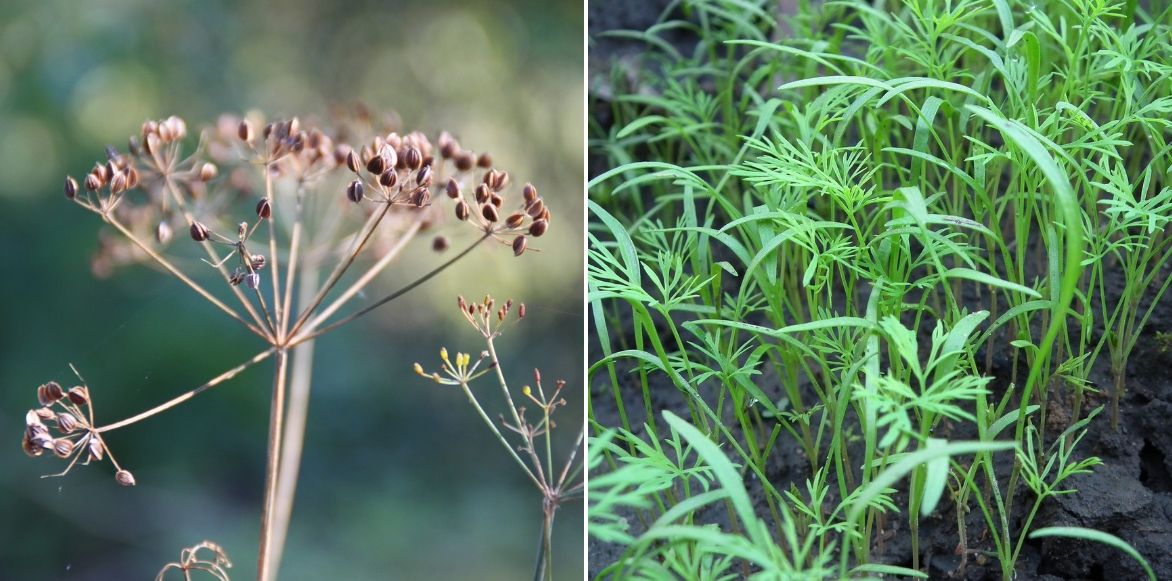
Dill seeds and sowing
Harvesting, storage and use of dill
- Harvesting leaves and seeds:
Dill leaves are harvested as needed. However, they are most fragrant just before flowering. Seeds are harvested after flowering, in autumn around September, when fully ripe (they turn a light brown). Hang stems, heads down, over a cloth to collect them and leave them to dry in sun and in a dry place on the fabric or on newspaper.
- Storing dill:
Dill leaves can be dried or even frozen but they will lose flavour: after air-drying in shade, store in airtight containers.
Seeds can be stored for three years in glass jars or paper bags. They can then be eaten or sown the following spring.
→ Learn more with our advice sheet How to store dill?
- Uses of dill:
Whether fresh or dried, dill leaves are widely used in cooking to flavour cooked, fresh or marinated fish and to add an aniseed note to dressings, salads and fresh cheeses. Seeds, with flavours of anise, fennel and cumin, can flavour pickling vinegar or be used as a condiment. Leaves and seeds are used in infusions with digestive and calming properties; they help promote sleep.
→ Learn more in our tutorial How to harvest and store dill seeds?
Benefits of dill
Valued since antiquity for its medicinal properties, dill is particularly known for its digestive properties, relieving flatulence, aiding digestion and acting as an excellent antispasmodic. Like fennel, it is a galactagogue, meaning it promotes breast milk production during breastfeeding. An essential oil is extracted from its seeds with sedative properties.
Pruning and care
Very undemanding, Dill is an annual requiring little attention; some weeding at establishment will be beneficial.
Not too much water, not too little! Watering is only necessary when soil is dry and especially during drought or in very hot weather. Lack of water can cause dill to set seed a little prematurely. To limit watering, we recommend mulching the base to keep soil cool. In a pot, more regular watering is necessary.
Dill dies after flowering and at first frost but it is so prolific that you will very likely have benefited from spontaneous sowings if you left umbels to set seed! Cut flowers regularly if you want to prevent it from self-seeding.
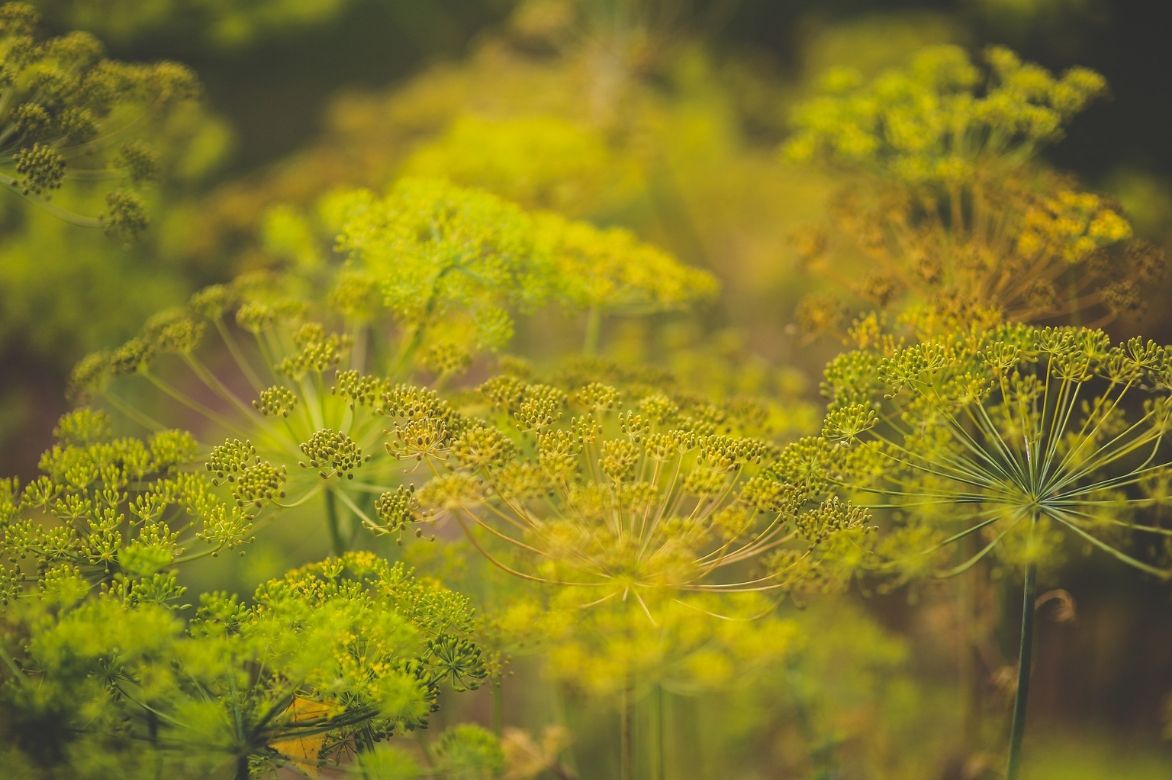
Possible diseases and pests
Snails and slugs relish first leaves; fortunately we share our tips to combat the damage they cause.
Dill is a great ally in both ornamental gardens and vegetable plots; its scent repels certain insects such as carrot fly, aphids, red spider mites and leek moth.
Damping-off in sowing threatens young plants: follow our advice to avoid this problem.
Best companion plants for dill
Dill has repellent properties, making it a good ally in the vegetable garden. Plant it among carrots and cucumbers as it repels flies. It also likes the company of broccoli, turnips, tomatoes, beetroot, cabbages, lettuces and onions. In the vegetable garden, it will have its place with dahlias, crambes and other aromatic plants.
However, avoid growing dill near parsnips and parsley. While it is obviously an excellent companion for all perennial aromatic plants, such as the mints, lemon balm, coriander, borage, chives, keep it well away from its cousin fennel, which it will find hard to tolerate!

An idea for pairing with other aromatic plants: Dill and Chinese chives, Marjoram and Sage (officinalis, Icterina, Tricolor), Thyme, Chives, Borage, Rosemary… in an herb spiral for example
This beautiful erect umbellifer, with a delicate structure, thread-like leaves and yellow flowers, brings a lot of lightness and height to natural gardens or to contemporary meadows in which it also naturally finds its place.
It will accompany perennials with airy flowering such as Angelica, large Coreopsis, Delphiniums, euphorbias, Echinops. In a large, slightly loose border, dill pairs well with Oriental poppies, Agastaches, Asters, Cosmos, Astrances.
In a large composition toned in yellow, it will sit alongside achilleas, rudbeckias, echinaceas or Helianthus. In a more contrasting blue/yellow scene, it pairs with the blue flowering of hardy geraniums, large-leaved veronicas and Russian sages.

An idea for a tone-on-tone pairing: Anethum graveolens, Nicotiana Lime Green, Petunia Sophistica Lime Green, Ipomea batatas with yellow foliage such as Sweet Caroline Light Green and Calibrachoa Superbells Lemon Slice
All grasses (Miscanthus, Stipa, Carex) and perennials with light summer flowering habit such as Alchemillas or pigamons will create moving, poetic scenes alongside it.
Get inspiration from our page “Aromatic herbs: 5 great ways to incorporate them into the garden” !
Useful resources
- Discover our tips to grow dill in a pot.
- Discover the finest collection of aromatic seeds to season seasonal dishes and flavour your infusions!
- Find the most beautiful giant perennials here
- Be charmed by our unique collections of cottage garden perennials
- It’s easy to succeed with the sowing of aromatic plants by following our tips!
- Subscribe!
- Contents
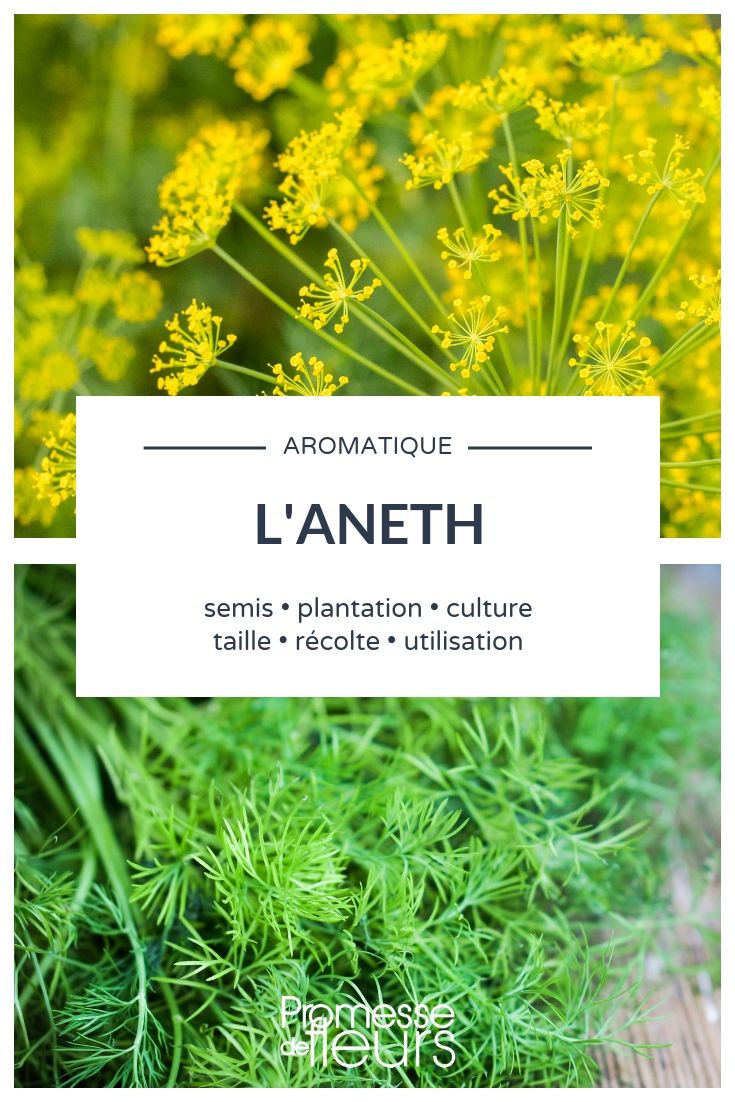


































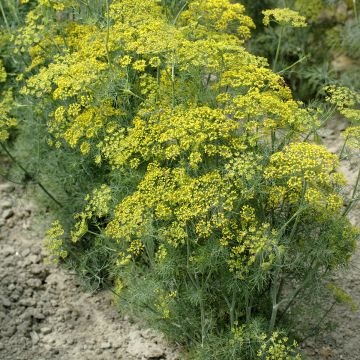
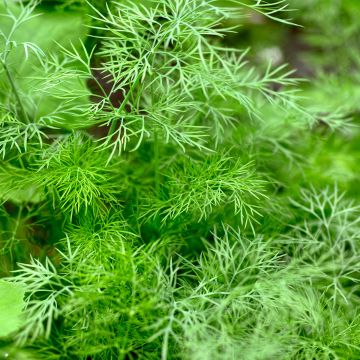



Comments